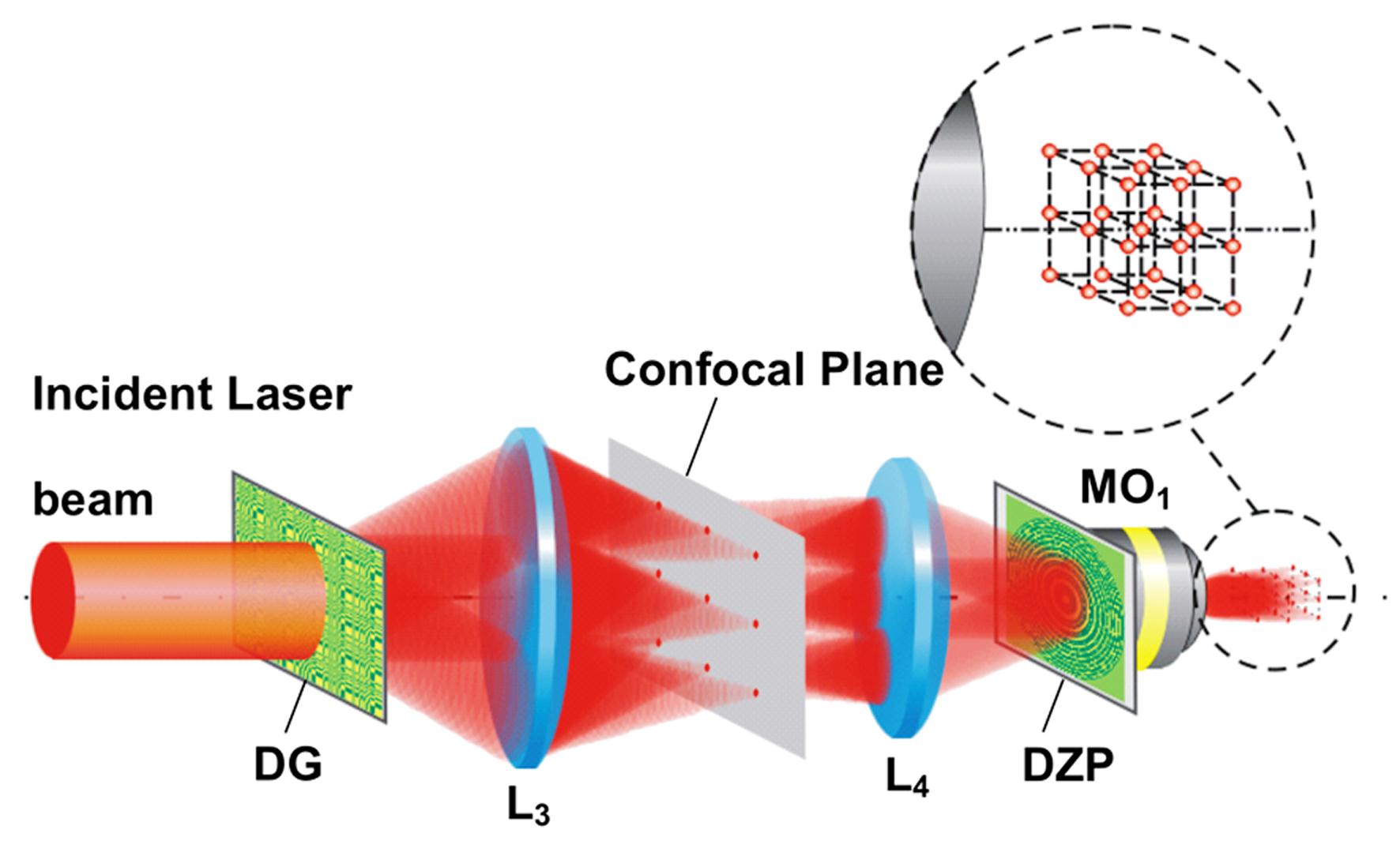A lens is one of the most basic and important optical elements. It is well-known that a conventional lens provides only one focus spot for one shot of laser beam, resulting in the intrinsic low processing speed when the focused field of a lens is used for laser processing based on point-by-point scanning, such as direct laser writing fabrication, confocal microscopy, and optical manipulation, etc..
Recently, researchers from ZHOU Changhe’s group in Lab of Information Optics and Optoelectronics Techniques, Shanghai Institute of Optics and Fine Mechanics, Chinese academy of science (SIOM, CAS) reported a scheme to produce a three-dimensional (3D) focus spot array in a 3D lattice structure, called a 3D Dammann array, in focal volume of an objective. This 3D Dammann array is generated by using two separate micro-optical elements, a Dammann zone plate (DZP) that produces a series of coaxial focus spots and a conventional two-dimensional (2D) Dammann grating (DG). Based on this kind of DZP, one can always obtain a 3D Dammann array both for low and high numerical aperture (NA) focusing objectives. For experimental demonstration, an arrangement combining a DZP, a 2D DG, and a pair of opposing lenses is proposed to generate a 5×5×5 Dammann array in focal region of an objective with NA=0.13 and another 6×6×7 Dammann array for an objective of NA=0.66. It is shown that this arrangement makes it possible to achieve 3D Dammann arrays with micrometer-sized focus spots and focus spacings of tens of micrometers for various practical applications, such as 3D parallel micro-/nano-machining, 3D simultaneous optical manipulation, 3D optical data storage, and multifocal fluorescence microscope, etc..
This work has been published on Applied Optics 51, 1619-1630 (2012), and it recently been selected for publication in Virtual Journal for Biomedical Optics (VJBO).
 |
| Fig. (Color online) Schematic of the optical system for generation of a 3D Dammann array. DG, 2D Dammann grating; DZP, Dammann zone plate; MO, microscope objective.(Image by SIOM) |